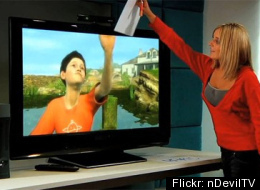As we have done already - after reading chapter 6 in Visual Intelligence, go through your text and find out how the text discusses the material in the reader and any additional detail it might offer. You will need to turn in a mind map in class on Tuesday so it might be a good idea to make a mind map before you start the next part of this project.
Try to adhere to the format below - keep the numbering for organization.
1) Discuss what you read in the reader. Think about what you learned from the reader. What were the main points the author was trying to make? What were some examples he used? What was the most interesting part of the chapter - etc.? Don't simply answer these questions; these are just some things to ask yourself before you start writing. I am pretty open to what you write about.
2) Discuss what you read in your text. How did the author of your text book go about addressing the related material? What did you find out about the topic that wasn't covered in the reader? What did you find interesting that was presented in the text? How difficult was it to find the related material in the text? Again don't specifically answer these questions, just use them as a way to think about the material. Feel free to experiment with your own style.
3) After you have had a chance to think about the material - what parts do you think you will remember and what parts do you think might fade from memory sooner.
4) Make a list of the terms and terminology you used in this post.





Recent Comments